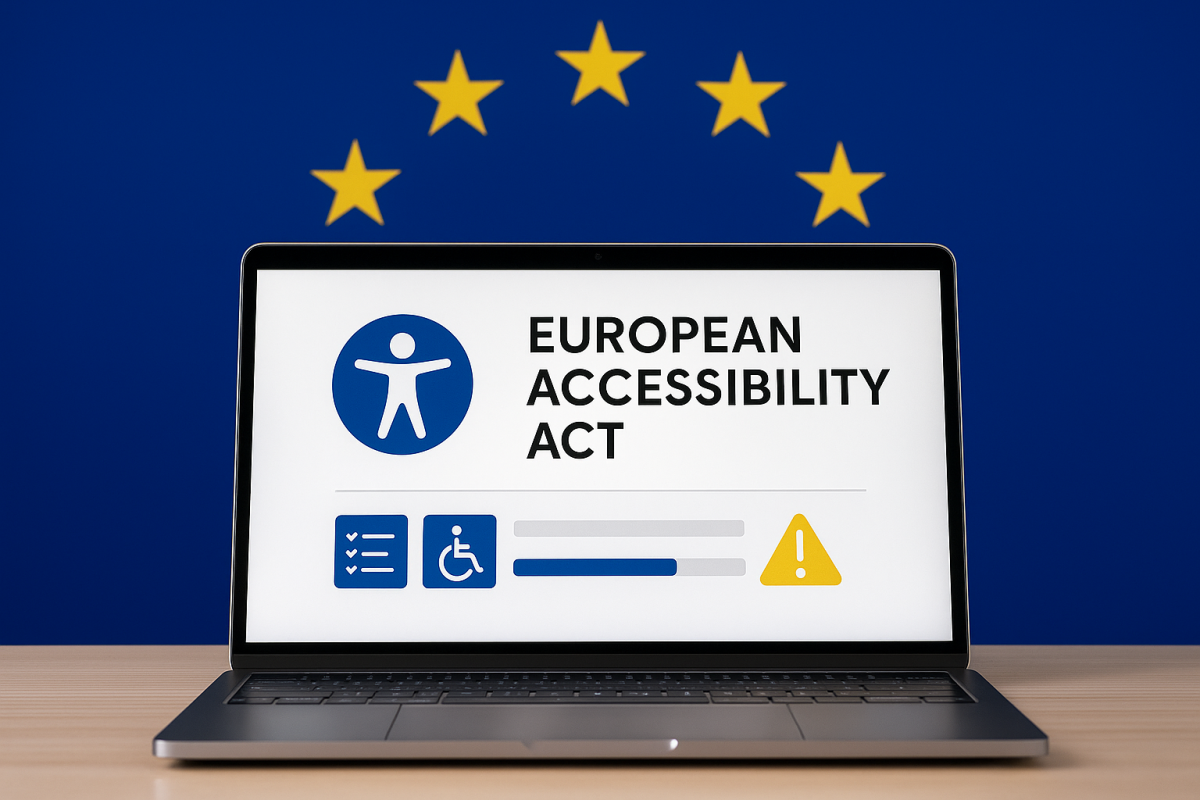The European Accessibility Act (EAA) represents a major shift in how businesses across the European Union must approach digital services. Set to take effect on June 28, 2025, the regulation mandates that websites, mobile apps, and other digital platforms be accessible to people with disabilities. For companies operating in or selling to the EU, this is not merely a recommendation—it’s a legal requirement that demands immediate attention.
Understanding the EAA
Adopted by the European Parliament in 2019, the EAA aims to harmonize accessibility standards across EU member states. Its goal is simple yet powerful: to ensure that all consumers, regardless of ability, can access and use digital services with ease. The legislation focuses on various sectors, including e-commerce, financial services, public transportation, telecommunications, and media.
To provide a consistent benchmark, the EAA references the Web Content Accessibility Guidelines (WCAG) 2.1, Level AA. These guidelines define what constitutes an accessible website and provide measurable standards that developers and designers must meet.
Who Needs to Comply?
The scope of the EAA is broad. It applies to any business or public service provider offering services to the general public within the EU. This includes EU-based companies and international businesses that operate in EU markets. While microenterprises—defined as companies with fewer than 10 employees and less than €2 million in turnover—may be exempt in some countries, most SMEs and all larger enterprises are expected to comply.
This means that whether you’re a retail brand based in Germany, a French startup offering SaaS solutions, or an international airline with a booking site available in Spain, the EAA applies to you.
Why Compliance Matters
Complying with the EAA is not just about avoiding legal consequences—though those are real and serious. Failing to meet the requirements could result in complaints, investigations, and fines imposed by regulatory bodies in each member state. However, the implications go far beyond compliance.
Non-compliant businesses risk alienating millions of potential customers. In the EU alone, over 80 million people live with a disability. These individuals—and their families—are more likely to engage with brands that prioritize accessibility. Furthermore, accessible websites tend to offer better user experiences, which leads to improved SEO performance, lower bounce rates, and higher conversion rates.
There’s also a reputational factor to consider. As digital inclusion becomes a social expectation, companies that embrace accessibility early position themselves as leaders. Those that don’t may be publicly criticized, especially if their digital platforms exclude users with disabilities.
Timeline and Urgency
The timeline for EAA implementation has been clear for several years:
- In June 2019, the directive was formally adopted by the European Parliament.
- By June 2022, member states were required to transpose the directive into national legislation.
- By June 28, 2025, affected businesses must be fully compliant.
While this may seem like ample time, compliance is not a switch you flip. It requires audits, remediation, testing, and sometimes redevelopment—tasks that can take weeks or months, especially for content-rich or legacy websites.
How to Get Started
If your business is just beginning to address accessibility, the first step is to understand your current standing. Running an accessibility audit—whether automated or expert-led—will help you identify key issues such as missing alt text, insufficient color contrast, inaccessible forms, and poor keyboard navigation. Here’s a checklist to verify how close your website is to being EAA compliant.
Once you know where the gaps are, you can prioritize fixes based on severity and impact. For many businesses, the most efficient route is partnering with an accessibility specialist like Reguweb, who can provide both strategy and execution. Publishing an accessibility statement, which outlines your current level of compliance and future plans, is also essential under the EAA. Use our guide to discover the most common fixes.
But compliance doesn’t stop after a single round of fixes. Accessibility should become part of your ongoing digital maintenance, with regular audits and updates to ensure your platforms remain inclusive as they evolve.
Conclusion
The European Accessibility Act signals a new era of digital responsibility. It’s not just about compliance; it’s about inclusion, equality, and opportunity. Businesses that act now won’t just avoid legal risk—they’ll build trust, expand their reach, and enhance their digital experiences for all users.
Whether you’re a growing SME or an established enterprise, the time to prepare for the EAA is now.
Don’t wait: Run a free EAA audit with Reguweb today and get actionable insights in minutes.
